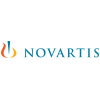Verteporfin 15mg/vial: i.v injection.
Verteporfin (visudyne) injection is supplied in a single-use glass vial with a gray bromobutyl stopper and aluminium flip-off cap. It contains a lyophilized dark green cake with 15mg vertepor¬fin. The product is intended for i.v injection only. Verteporfin is a 1:1 mixture of two regioisomers, the molecular formula is C41H42 N4O8.
Mode of action: Verteporfin is a light-activated drug used in photodynamic therapy. This verteporfin photodynamic therapy is a two-stage process requiring- administration of verteporfin for injection & administration of nonthermal red light. Verteporfin is transported in the plasma primarily by lipoproteins. Once verteporfin is activated by light in the presence of oxygen, highly reactive, short-lived singlet oxygen & reactive oxygen rad¬icals are generated. Light activation of vertepo¬rfin results in local damage to neovascular endo¬thelium, resulting in vessel occlusion. Damaged endothelium is known to release procoagulant & vasoactive factors through the lipo-oxygenase (leukotriene) & cyclo-oxygenase (eicosanoids such as thromboxane) pathways, resulting in platelet aggregation, fibrin clot formation and vasoconstriction. Verteporfm appears to some¬what preferentially accumulate in neovasculature, including choroidal neovasculature. However, animal models indicate that the drug is also pres¬ent in the retina. Therefore, there may be collate¬ral damage to retinal structures following photo¬activation including the retinal pigmented epithelium and outer nuclear layer of the retina. The temporary occlusion of choroidal neovascu¬larization (CNV) following verteporfm therapy has been confirmed in humans by fluorescein angiography.
Ind: Verteporfm therapy is indicated for the treat¬ment of patients with predominantly classic sub- foveal choroidal neovascularization due to age related macular degeneration (AMD), pathologic myopia, or presumed ocular histoplasmosis.
There is insufficient evidence to indicate verteporfm for the treatment of predominantly occult subfoveal choroidal neovascularization. C/I: Verteporfm injection is contraindicated for patients with porphyria or a known hypersensitivi¬ty to any component of this preparation.
A/R: Severe chest pain, vasovagal & hypersensitivity reactions have been reported. Vasovagal & hypersensitivity reactions on rare occasions can be severe. These may include syncope, sweating, dizziness, rash, dyspnea, flushing & changes in blood pressure & heart rate. General symptoms can include headache, malaise, urticaria & pruritus.
The most frequently reported adverse events to verteporfm are injection site reactions (including pain, edema, inflammation, extravasation, rashes, hemorrhage & discoloration) & visual distur¬bances (including blurred vision, flashes of light, decreased visual acuity & visual field defects, including scotoma). These events occurred in approximately 10%-30% of patients. For more information, see manufacturer's package insert. Precautions & warnings: General: Following injection with verteporfm (visudyne), care should be taken to avoid exposure of skin or eyes to direct sunlight or bright indoor light for 5 days. If emergency surgery is necessary within 48 hours after treatment, as much of the internal tissue as possible should be protected from intense light. Standard precautions should be taken dumg infusion of verteporfm injection to avoid extravasation. Examples of standard precautions include, (but are not limited to):
1. A free-flowing I.V line should be established before starting verteporfm infusion & the line should be carefully monitored. 2. Due to the possible fragility of vein walls of some elderly patients, it is strongly recommended that the largest arm vein possible, preferably antecubital, be used for injection. 3. Small veins in the back of the hand should be avoided.
Extravasation of verteporfm, specially if the affected area is exposed to light, can cause severe pain, inflammation, swelling or discoloration at the injection site.
If extravasation occurs, the infusion should be stopped immediately. The extravasation area must be thoroughly protected from direct light until swelling and discoloration have faded in order to prevent the occurrence of a local bum, which could be severe. Cold compresses should be applied to the injection site. Oral medications for pain relief may be administered.
Verteporfm therapy should be considered carefully in patients with moderate to severe hepatic impairment or biliary obstruction since there is no clinical experience with verteporfm in such patients.
Patients who experience severe decrease of vision of =4 lines within 1 week after treatment shoulld not be retreated, at least until their vision completely recovers to pretreatment levels & the potential benefits and risks of subsequent treatment are carefully considered by the treating physician.
Use of incompatible lasers that do not provide the required characteristics of light for the photo- activa tion of verteporfm could result in incompl¬ete treatment due to partial photoactivation of vert¬eporfm, overtreatment due to overactivation of vert¬eporfm, or damage to surrounding normal tissue. Pregnancy & lactation: There are no adequate & well-controlled studies in pregnant woman. So, verteporfm should be used during pregnancy only if the benefit justifies the potential risk to the fetus.
Because of the potential for serious adverse reactions in nursing infants from verteporfm, a decision should be made whether to discontinue nursing or postpone treatment, taking into account the importance of the drug to the mother. Dosage & admin: A course of 'verteporfin for injection' therapy consists of two-step process requiring administration of both drug & light. The first step is the i.v infusion of verteporfin. The second step is the activation of verteporfin with light from a nonthermal diode laser.
The physician should reevaluate the patients every 3 months & if choroidal neovascular leakage is detected on fluorescein angiography, therapy shouldbe repeated.
Lesion size determination: The greatest linear dimension (GLD) of the lesion is estimated by fluorescein angiography and color fundus photography. All classic & occult CNV, blood and/or blocked fluorescence, & any serous detachments of the retinal pigment epithelium should be included for this measurement. Fundus cameras with magnification within the ange of 2.4-2.6 x are recommended. The GLD of the lesion on the fluorescein angiogram must be corrected for the magnification of the fundus camera to obtain the GLD of the lesion on the retina.
Spot size determination: The size of the spot to be treated should be 1000 microns larger than the GLD of the lesion on the retina to allow a 500 micron border, ensuring full coverage of the lesion. The maximum spot size used in the clinical trials was 6400 microns.
The nasal edge of the treatment spot must be positioned at least 200 microns from the temporal edge of the optic disc, even if this will result in lack of photoactivation of CNV within 200 microns of the optic nerve. Verteporfin administration: Reconstitute each vial of verteporfin with 7ml of sterile water for injection to provide 7.5ml, containing 2mg/ml. Reconstituted verteporfin must be protected from light & used within 4 hours. It is recommended that reconstituted verteporfin be inspected visually for particulate matter & discoloration prior to administration. Reconstituted verteporfin is an opaque dark green solution. Verteporfin may precipitate in saline solutions. Do not use normal saline or other parenteral solutions. Do not mix verte¬porfin in the same solution with other drugs. The volume of reconstituted verteporfin required to achieve the desired dose of 6mg/m2 body surface area is withdrawn from the vial and diluted with 5% dextrose for injection to a total infusion volume of 30ml. After dilution, protect from light & use within a maximum of 4 hours. The full infusion volume is administered i.v over 10 minutes at a rate of 3ml (45 drops)/minute, using an appropriate syringe pump & in-line filter. The clinical studies were conducted using a standard infusion line filter of 1.2 microns.
Precautions should be taken to prevent extravasation at the injection site. If extra¬vasation occurs, protect the site from light. Light administration: Initiate 689nm wavelength laser light delivery to the patient 15 minutes after the start of the 10-minute infusion with verteporfin.
Photoactivation of verteporfin is controlled by the total light dose delivered. In the treatment of choroidal neovascularization, the recommended light dose is 50 J/cm2 of neovascular lesion administered at an intensity of 600mW/cm2. This dose is administered over 83 seconds. Light dose, light intensity, ophthalmic lens magnification factor & zoom lens setting are important parameters for the appropriate delivery of light to the predeter¬mined treatment spot. Follow the laser system manuals for procedure setup & operation.
Drug inter: See manufacturer's package insert. Note: For further information, please consult manufacturer's literature.
15mg (in single-use glass) vial: 137280.00 MRP

